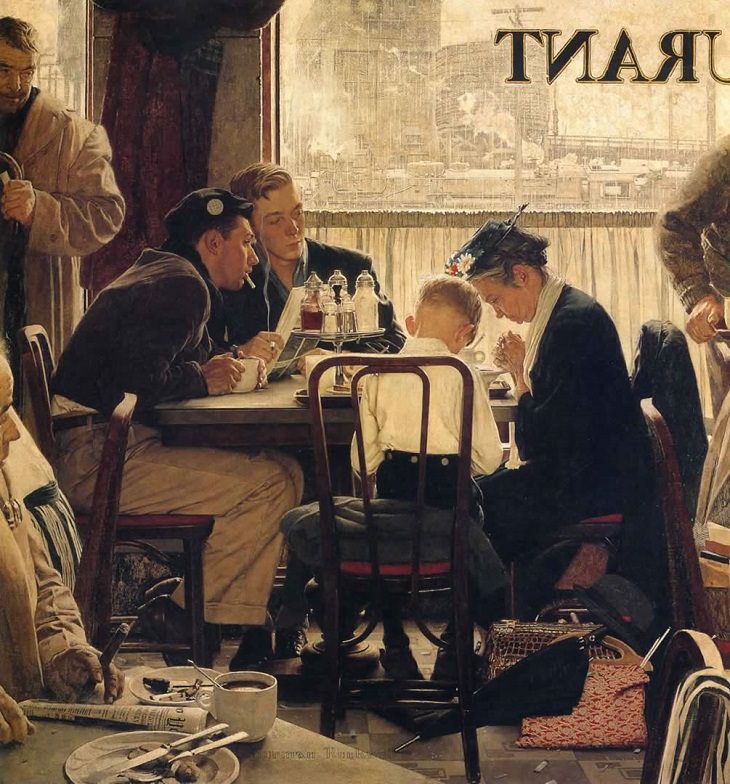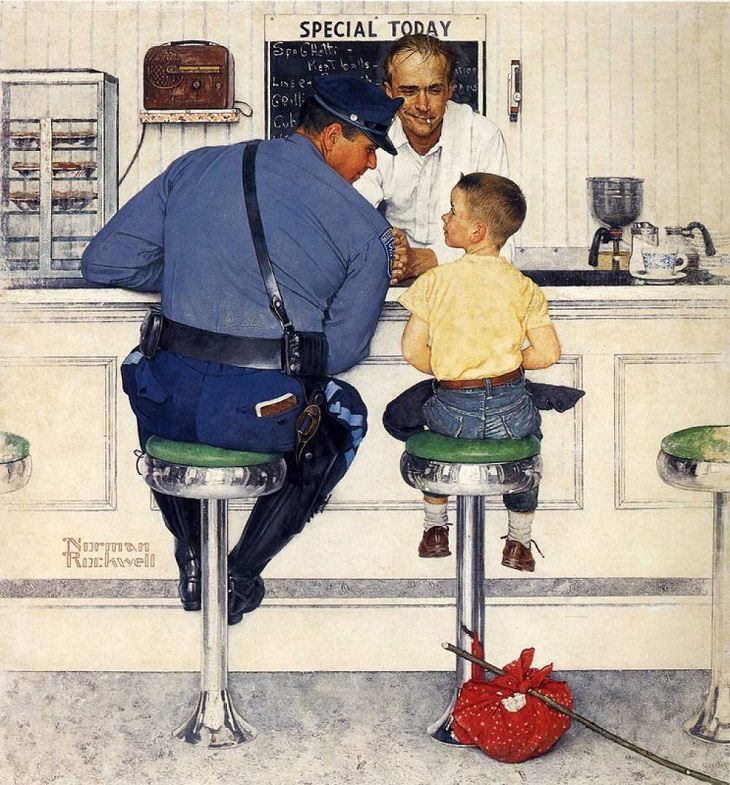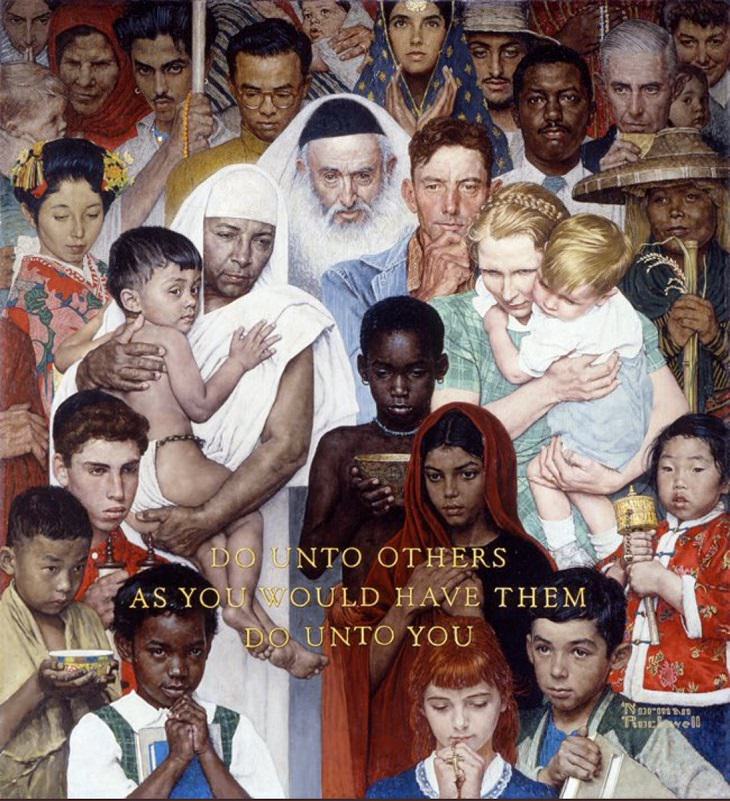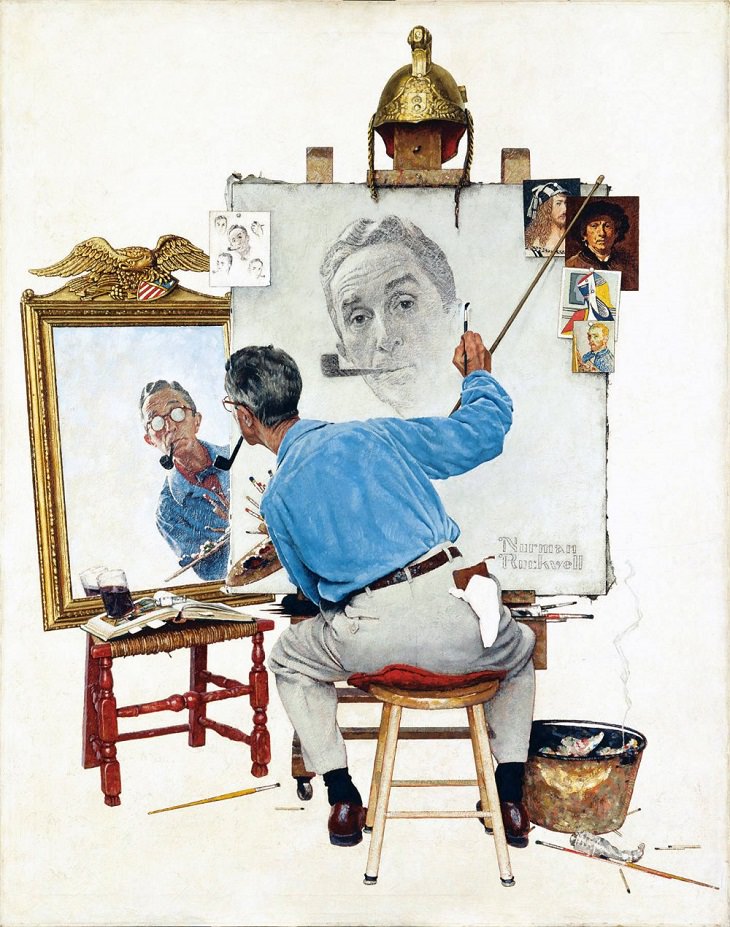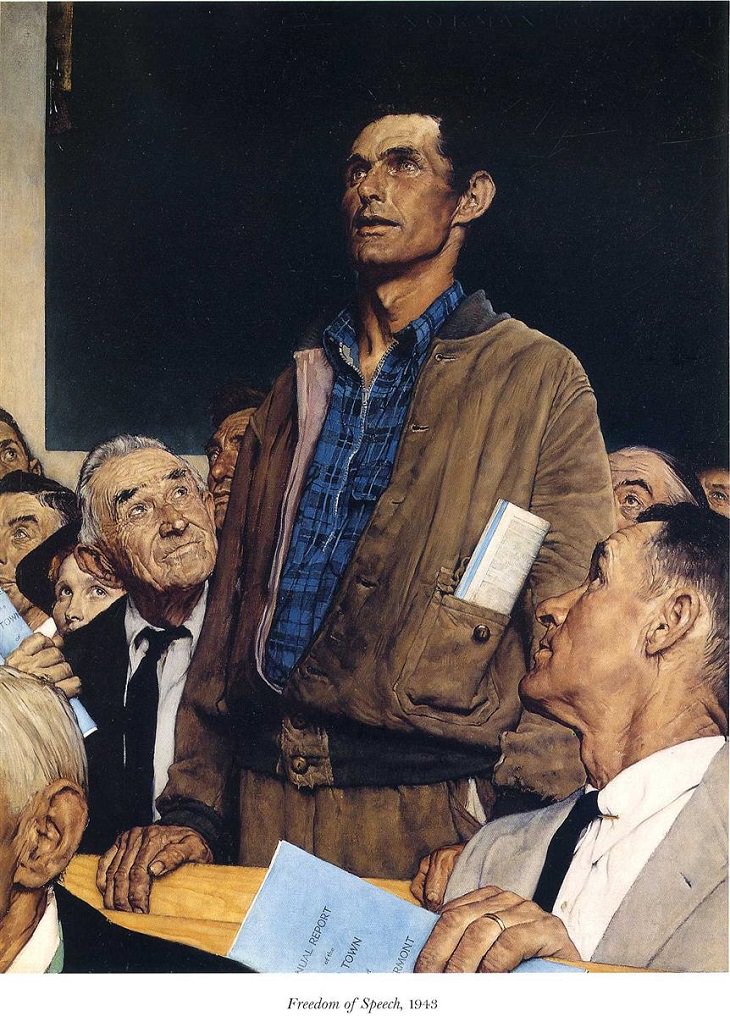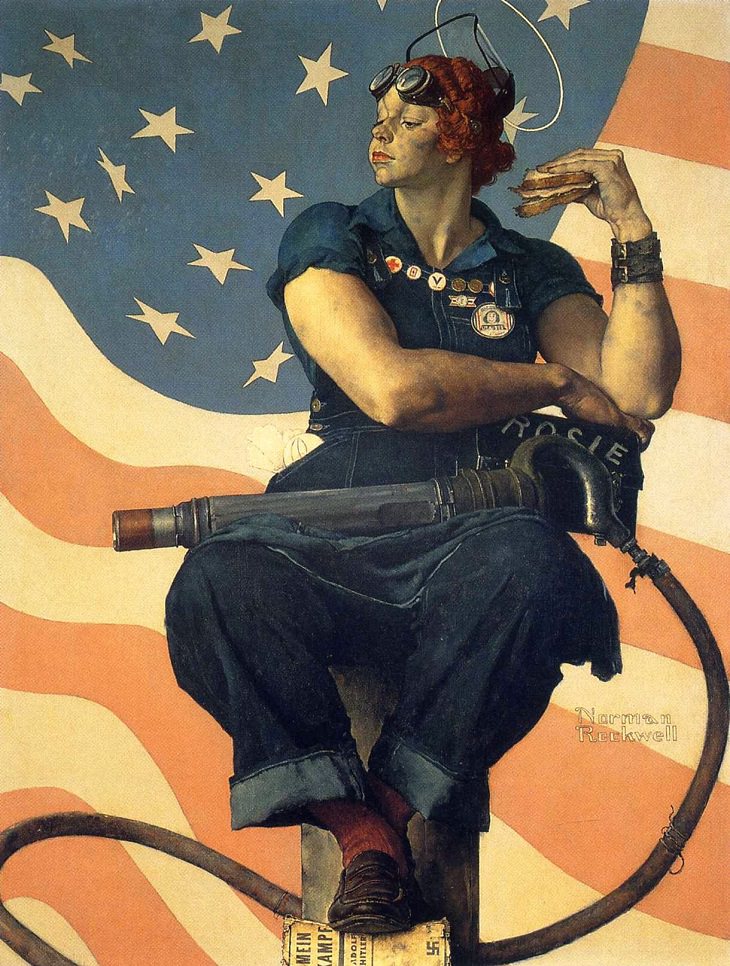1. Home for Christmas (1967)
Rockwell moved to Stockbridge, Massachusetts in 1953 and he spent the remainder of his life there. He painted this picture of his home-town to emphasize the essence of Christmas in small towns across the United States. In addition to the public library, the barbershop, the insurance office, and the Victorian hotel, on the right of the painting is the artist’s South Street house and studio. This affectionate portrait of his home-town has come to symbolize the holiday season.
2. Girl at Mirror (1954)
This painting follows a long tradition in which artists (including Pablo Picasso and Edouard Manet) portrayed a female contemplating her reflection. In Rockwell’s painting, a young girl is studying her reflection, and on the floor by her feet is a vintage doll, a tube of lipstick, a comb and a brush. She is sitting on a red stool and has propped her mirror up using a chair. She has a picture of Jane Russel, one of Hollywood’s leading sex symbols at the time, on her lap. The girl portrayed in this painting is Mary Whalen Leonard, Rockwell’s famous female model. It’s a painting that is thought to represent her anxiousness at being on the verge of womanhood. However, there are other interpretations with some finding more sexual and deeper themes in this artwork.
3. Saying Grace (1951)
Rockwell painted this for the cover of The Saturday Evening Post’s 1951 Thanksgiving Issue. It portrays a woman and a young boy saying grace in a crowded restaurant. He was inspired to create this artwork by a reader of the magazine who saw a Mennonite family praying in a restaurant. This painting sold for $46 million in an auction at Sotheby’s in December of 2013. At that time, it was the most expensive American painting ever sold at auction.
4. The Runaway (1958)
This painting depicts a young child on a stool with a police officer on his left and the counterman in front of him. That this child is a wannabe vagabond can be seen from the stick and handkerchief on the floor under his stool. Though the scene of a runaway child would usually instill anxiety, Rockwell’s painting radiates comfort and safety due to the protective environment the kid now finds himself in. This painting portrays an idealized version of small-town America where the community is only too happy to watch over a child in need.
5. Golden Rule (1961)
In 1952, inspired by the United Nation’s humanitarian mission, Norman Rockwell conceived an illustration in which he would paint sixty-five people representing the world’s nations. However, he abandoned this idea the following year. He revisited it a decade later, but this time he decided to just focus on the idea of common humanity. This idea lead to this painting which features a gathering of men, women and children of different religions, races, and ethnicities; and written in front of them is the simple but universal phrase: “Do unto others as you would have them do unto you.”
6. Triple Self-Portrait (1960)
This painting is inspired by a 17th century self-portrait by Austrian painter Johannes Gumpp. It shows Rockwell from behind, looking at himself in a mirror, and painting his own portrait. There are lots of other interesting details in the portrait including paintings of famous artists such as Pablo Picasso, Van Gogh, and Rembrandt. This painting is a renowned work in self-portraiture and is one of Rockwell’s most famous paintings.
7. Freedom of Speech (1943)
On 6th January 1941, US President Franklin D. Roosevelt gave his famous Four Freedoms speech in which he identified essential human rights that should be protected worldwide. In 1943, Rockwell created four paintings that correspond to the four freedoms mention by Roosevelt. “Freedom of Speech” is the first painting in this series, and it shows a working-class man standing up in the audience at a town hall meeting to make his point with everyone paying attention to him. The Four Freedoms series was a huge success and is the work for which Rockwell is most known.
8. Rosie the Riveter (1943)
Rosie the Riveter is a cultural US icon representing American women who worked in factories and shipyards during World War II. Rockwell’s painting portrays Rosie wearing denim work wear and eating her lunch. There’s a rivet gun on her lap and under her shoes is a copy of Hitler’s Mein Kampf. The model for this painting was 19-year-old Mary Doyle, a phone operator from Arlington, Vermont. Rockwell made the figure more muscular and larger than Keefe was in real life as he needed the image to depict strength. This painting became an iconic symbol for the strength and contributions of women during World War II.
9. The Problem We All Live With (1964)
This painting shows Ruby Bridges, a six-year-old African-American girl who was the first black child to desegregate the all-white William Frantz Elementary School in Louisiana after segregation in public schools was ruled to be unconstitutional by the Supreme court. In this painting, she is being escorted by four deputy United States marshals due to threats of violence against her. On the wall behind her, you can see a racial slur. This painting was displayed in the White House when 56-year-old Ruby met with President Barack Obama in 2011.
10. Freedom from Want (1943)
This is the third and most renowned painting of the Four Freedoms series by Rockwell. It portrays a multi-generational family gathered around the table for a holiday meal. The grandmother is about to place the turkey down while the grandfather looks on with fondness and is ready to carve it. The other people in the picture are friends and family of Rockwell, who were photographed individually and painted into the scene. This painting has become the most famous representation of Thanksgiving in America and it has been adapted and parodied a number of times.



